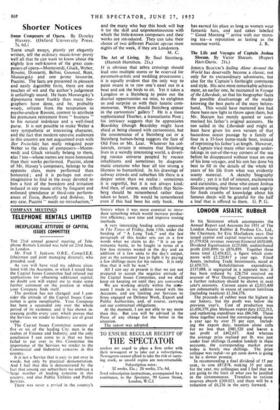IT is obvious that zebra crossings should lead into multiple
stores or be reserved for pavement-artists and wedding processions ; it is equally evident that the only way to paint swans is to row one's easel out in a boat and ask the birds to sit. Yet it takes a Langdon or a Steinberg to point out the diurnal opportunities we miss, to enlighten us and surprise us with their lunatic com- monsense. Where should Steinberg appear in the cartoonists' gallery ? He is a more sophisticated Thurber, a transatlantic Pont ; his intricacy suggests that he appreciates Beardsley (though Beardsley might have shied at being classed with cartoonists), but the countenance of a Steinberg cat or a Steinberg human-being suggests the face of Old Foss or Mr. Lear. Whatever his col- laterals, certain it remains that Steinberg lives in a weirdly interesting world, a divert- ing rococo universe peopled by rococo inhabitants and sometimes by diagram- matic creatures who bear all too strong a likeness to humankind. In his drawings of subway crowds and suburban life there is a deeper satire than we realise : sometimes it is regretful, but it is not always kind: And then, of course, one reflects that Stein- berg should be remembered rather than taken to heart. He would be remembered even if this had been his only book. He
has earned his place as long as women wear fantastic hats, and iced cakei labelled " Good Morning " arrive with our morn- ing tea—a reputation as lasting as the


































 Previous page
Previous page